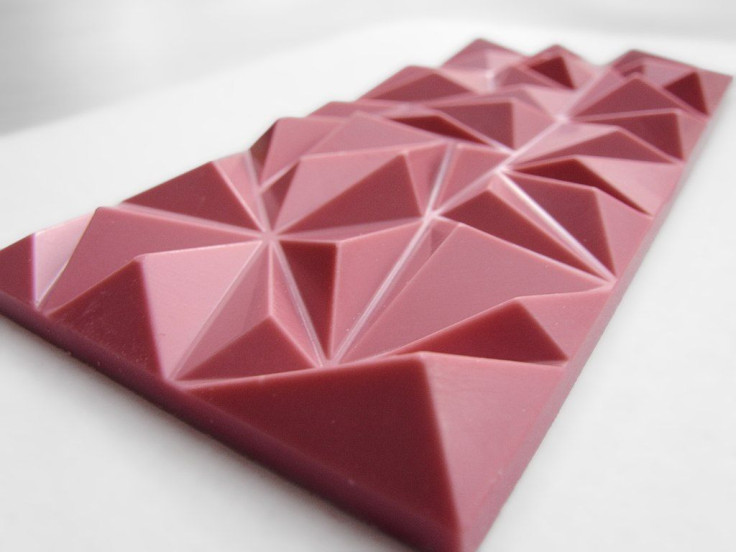What Is Ruby Chocolate? FDA Issues Temporary Permit To Market 60 Million Pounds In US

As if white, milk and dark chocolate weren’t enough, the Food and Drug Administration has given the go-ahead to bulk-chocolate producer Barry Callebaut USA LLC to gather data to determine whether there’s a market for ruby chocolate.
The Zurich company first announced two years ago it would be developing the pink, berry-flavored variety of cacao for confections. Companies like Vosges Haut-Chocolat, Trader Joe’s and Harry & David have introduced products made with ruby cacao, the first new chocolate variety to be introduced since the 1930s.
The FDA published approval Friday in the Federal Register to allow Barry Callebaut to collect data to determine ruby chocolate’s commercial viability for the next 15 months. Ruby chocolate already has gained approval in several international markets.
The FDA permit allows about 60 million pounds of test products, which will be imported from Belgium and also produced in Vermont and California, to be marketed – much of it targeted at millennials and their penchant for posting colorful pictures of foods on social media.
Barry Callebaut describes ruby chocolate as “neither bitter, milky or sweet, but a tension of fresh berry fruitiness and luscious smoothness,” a berry-flavored chocolate. The company has been experimenting with the beans for more than a decade in bakery items, ice creams and desserts.
“Like grapes for fine wines, cocoa beans are influenced by the terroir in which they grow. Ruby cocoa beans grow under unique climate conditions and can be found in Ecuador, Brazil or Ivory Coast,” the company said.
Ruby made its debut in China in 2017, and Barry Callebaut said no additives or flavorings were added in the manufacturing process. Ruby’s texture actually falls between white and milk.
Chocoholics speculate the pink color comes from unfermented cacao beans, which also explains why ruby chocolate doesn’t really taste like traditional chocolate.
Nestle was the first distributor of ruby chocolate, using it to make KitKat bars that were first released in Japan where KitKats come in a variety of flavors, including Sweet Potato and Sake.
© Copyright IBTimes 2024. All rights reserved.






















